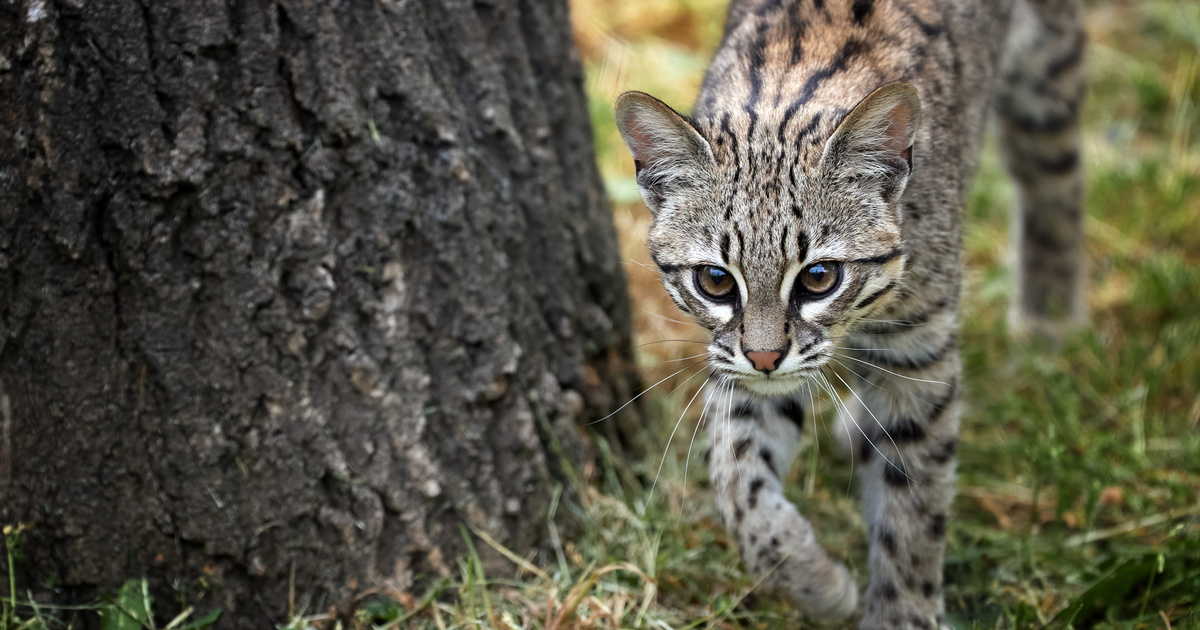The great pleasure of ethologists is when they discover new species of animals, and as humans become more and more advanced, and the number of untouched areas of the planet shrinks, this happens more and more often. New news that Brazilian researchers Discover Oncilla, Leopardus tigrinus, or leopard cat, is a new subspecies. Unfortunately, this species is already classified as endangered.
The predatory leopard cat weighs a maximum of 2.5 kilograms, and is 40-50 centimeters long. It is native to Central and South America. It can climb very tall trees and feed on small creatures. To date, two main subspecies have been recognized, the northern and southern leopard cats, but there are several smaller subspecies. However, researchers were not aware of the species now called the leopard cloud cat (Leopardus pardinoides).
The new type of cat was discovered in South and Central America, and traces of it were found in Costa Rica, Colombia, Peru, Bolivia and Argentina. This is a different region from other leopard cats because the northern leopard cat lives in the savannas of the Guyana Mountain Range, while the southern leopard cat is native to central and southern Brazil, Paraguay, and Argentina. Unfortunately, all leopard cat species are threatened with extinction due to habitat destruction, hunting (famous for their fur), and deforestation. But the purity of his species is also threatened by the fact that he finds sound well with the striped pampas cat, another species of wild cat.
New underwater worlds
But it's not just the land that promises new species: more than 50 new species were recently discovered near Easter Island during a marine expedition. Among the never-before-seen creatures found here were squid, fish, corals, molluscs, starfish, glass sponges, sea urchins, crabs and lobsters. The novelties concern the R/V Falkor of the Schmidt Ocean Institute, which is currently investigating the underwater environment in the Pacific Ocean. Discovery.
Now on Sala Gomez, a small uninhabited Chilean island in the Pacific Ocean 400 kilometers east-northeast of Easter Island and part of a volcanic mountain range, the research team has identified 160 different species, at least a third of the species. Which was completely unknown to scientists until now. Until now, the island has been known to be home to whales, sea turtles, swordfish, tuna and sharks, but now they have also found a special type of coral that sparkles in the deep sea. They also found a fish with an angry face that belongs to the sea frog family and really looks like a sad smiley.
They also marveled at the new deep-sea dragonfish, which belongs to the previously known snakefish family, and which also has a terrifying appearance and large fang-like teeth. The deep-sea snakefish can swim to a depth of up to 2,000 metres. It is funny that females of this species have large mustaches and teeth, and can reach a length of 40 cm, while males have no facial hair, no teeth, or teeth. It is barely 5 centimeters long.
A family of soft corals called Chrysogorgia, octopuses and lobsters have also been found on the north side of the uninhabited island.
As one of the senior scientists of the research organization Schmidt said, the data collected during the expedition could help create new reserves even in the open sea. Incidentally, the research team is also conducting a hydrographic survey of the geographical features of the sea floor: they have mapped an area of 78 thousand square kilometers, and found six mountains for which there are no records yet. These underwater mountains are the remains of extinct volcanoes, as reported by IFLScience He writes, acting as “bee hives for biodiversity”. Corals, sponges, fish, cephalopods, and deep-sea crustaceans also live on and within them.
This was the Schmidt Ocean Institute's second successful expedition to this area this year, the first being in February, when 100 new species were discovered, including corals, sponges, sea urchins and lobsters. After the repeated successful expedition, the researchers declared that the special, untouched ecosystem had a unique biodiversity and therefore deserved proper protection.














































